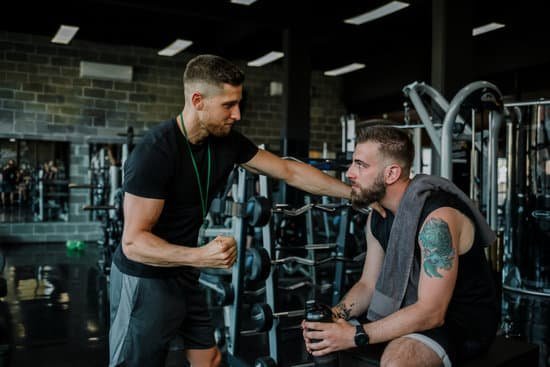Are you wondering what to eat and exercise to get fit? Achieving fitness goals requires a combination of proper nutrition and regular physical activity. In order to reach your desired level of fitness, it is essential to understand the role of macronutrients in the body, as well as the best foods to include in your diet. Additionally, effective exercises and creating a balanced fitness routine are crucial components of achieving optimal fitness.
Understanding macronutrients is key to achieving a balanced diet that will support your fitness goals. Carbohydrates, proteins, and fats all play distinct roles in providing energy, building muscle, and supporting overall health. By incorporating the right balance of macronutrients into your diet, you can fuel your body for workouts and aid in recovery after exercise.
In addition to understanding macronutrients, the best foods to eat for fitness are those that are nutrient-dense and provide essential vitamins and minerals. A comprehensive list of nutritious foods can help you make informed choices when planning meals and snacks. By incorporating a variety of healthy options into your diet, you can ensure that your body is getting the fuel it needs to support an active lifestyle.
Understanding Macronutrients
When it comes to achieving fitness goals, nutrition plays a crucial role. Understanding macronutrients is essential in creating a balanced diet that supports overall health and fitness. Carbohydrates, proteins, and fats are the three main macronutrients that provide energy and support various bodily functions.
Carbohydrates are the body’s primary source of energy. They are broken down into glucose, which fuels our muscles and organs. Opt for complex carbohydrates such as whole grains, fruits, and vegetables to provide sustained energy throughout the day.
Proteins are essential for repairing and building muscle tissue. They also play a role in hormone production and enzyme function. Lean sources of protein such as chicken, fish, tofu, and legumes should be included in every meal for optimal muscle recovery and growth.
Lastly, fats are important for hormone regulation and nutrient absorption. Healthy fats like avocados, nuts, seeds, and olive oil should be incorporated into your diet in moderation to support overall health. Understanding the role of each macronutrient empowers individuals to make informed decisions about their food choices.
| Macronutrient | Examples |
|---|---|
| Carbohydrates | Whole grains, fruits, vegetables |
| Proteins | Chicken, fish, tofu, legumes |
| Fats | Avocados,nuts ,seeds ,olive oil |
The Best Foods to Eat for Fitness
When it comes to achieving fitness goals, the right diet plays a crucial role. Consuming nutritious and healthy foods can provide the body with the fuel it needs to perform optimally during workouts and aid in muscle recovery afterward.
Some of the best foods to eat for fitness include lean proteins such as chicken, turkey, and fish, which are essential for muscle repair and growth. Incorporating complex carbohydrates like sweet potatoes, quinoa, and brown rice into your meals can provide long-lasting energy that is necessary for sustained physical activity.
In addition to proteins and complex carbohydrates, healthy fats are also an important part of a balanced diet. Sources of healthy fats include avocados, nuts, seeds, and olive oil. These fats are essential for hormone production and maintaining overall health. Furthermore, fruits and vegetables should be a staple in any fitness-focused diet due to their high vitamin, mineral, and fiber content. These nutrients support immune function, aid in digestion, and help reduce inflammation in the body.
When planning meals for fitness, it’s important to consider portion sizes to ensure that you’re consuming the right balance of macronutrients. Additionally, meal preparation can make it easier to stick to a nutritious diet by having healthy options readily available when hunger strikes. By focusing on wholesome and nutrient-dense foods that are rich in vitamins, minerals, antioxidants, protein, fiber, and healthy fats; individuals can support their fitness goals more effectively.
| Food Group | Examples |
|---|---|
| Lean Proteins | Chicken breast, turkey breast, salmon |
| Complex Carbohydrates | Sweet potatoes, quinoa, brown rice |
| Healthy Fats | Avocados,nuts (almonds), seeds (chia seeds), olive oil |
| Fruits & Vegetables | Berries (blueberries), leafy greens (spinach), cruciferous vegetables (broccoli) |
Meal Planning and Preparation
Benefits of Meal Planning
One of the key benefits of meal planning is that it allows individuals to make healthier food choices. When meals are planned in advance, there is less reliance on convenience foods or takeout options, which tend to be higher in calories, unhealthy fats, and sodium. Additionally, by having a well-thought-out meal plan, individuals are more likely to consume a wider variety of nutrients from different food groups, promoting overall health and wellness.
Another advantage of meal planning is cost savings. By creating a shopping list based on planned meals for the week, individuals can avoid impulse purchases at the grocery store and reduce food waste by only buying what they need. This not only benefits their wallets but also encourages mindful consumption and sustainability.
Tips for Effective Meal Planning
To effectively plan meals for a fit lifestyle, it’s important to prioritize balanced nutrition. This means incorporating a variety of nutrient-dense foods such as lean proteins, whole grains, fruits, vegetables, and healthy fats into each meal. It’s also beneficial to consider portion sizes and caloric intake based on individual fitness goals, whether it’s weight loss, muscle gain, or maintenance.
In addition to considering nutritional content when planning meals, it’s important to think about practicality and convenience. Preparing meals that can be easily stored or reheated throughout the week can save time and make it easier to stick with the plan.
Batch cooking certain components like grains or proteins can also streamline the preparation process while providing a foundation for building different meals throughout the week. Ultimately, effective meal planning should support both nutrition and lifestyle needs for long-term success in achieving fitness goals.
The Importance of Hydration
Hydration is a crucial component of any fitness routine. Water plays a critical role in supporting bodily functions, including digestion, nutrient absorption, circulation, and temperature regulation. When it comes to maintaining hydration during workouts and throughout the day, there are several drink options to consider. Here are some of the best drinks to maintain hydration:
- Water: Of course, water is the best option for staying hydrated. It contains zero calories, no added sugars, and is essential for regulating body temperature and transporting nutrients throughout the body.
- Electrolyte Drinks: For intense workouts or prolonged physical activity, electrolyte drinks can help replenish the body’s stores of minerals such as sodium, potassium, and magnesium that are lost through sweat.
- Coconut Water: This natural beverage is low in calories and sugar while being rich in potassium and other electrolytes. It can be a refreshing alternative to traditional sports drinks.
In addition to choosing the right drinks for hydration, it’s important to monitor daily water intake. The general recommendation is to drink at least eight 8-ounce glasses of water per day, but individual needs may vary depending on factors such as activity level, climate, and overall health. Keeping track of water consumption can ensure that you’re meeting your body’s hydration needs to support your fitness goals.
Effective Exercises for Fitness
Cardiovascular Exercises
Cardiovascular exercises are essential for improving and maintaining heart health, burning calories, and increasing overall fitness. Examples of effective cardiovascular exercises include running, cycling, swimming, and high-intensity interval training (HIIT). These workouts elevate the heart rate and help in improving endurance while burning a significant amount of calories. Incorporating at least 150 minutes of moderate-intensity cardio exercise into your weekly routine can significantly contribute to achieving a fit and toned physique.
Strength Training
Strength training is crucial for building lean muscle mass, increasing metabolism, and improving overall strength. This type of exercise includes weightlifting, resistance band workouts, bodyweight exercises, and functional training. By incorporating strength training at least 2-3 times per week, individuals can sculpt their bodies and achieve a more toned appearance. Additionally, having more lean muscle mass also means the body will burn more calories at rest, aiding in weight management.
Flexibility Exercises
Incorporating flexibility exercises such as yoga or Pilates into a fitness routine can improve mobility, reduce the risk of injury, and enhance overall physical performance. These types of workouts focus on stretching and lengthening muscles while also improving balance and posture. Flexibility exercises also provide an opportunity for relaxation and stress relief, contributing to a holistic approach to achieving fitness goals.
By combining these different types of effective exercises into a well-rounded fitness routine, individuals can work towards achieving a fit and toned physique while reaping the benefits of improved cardiovascular health, increased strength, and enhanced flexibility.
Creating a Balanced Fitness Routine
- Cardio: Cardiovascular exercise is important for improving your heart health and burning calories. Incorporate activities such as running, swimming, cycling, or dancing into your routine to get your heart pumping and increase endurance.
- Strength Training: Building muscle is crucial for increasing metabolism and achieving a toned physique. Include exercises such as weightlifting, bodyweight exercises, or resistance training to strengthen and build muscle mass.
- Flexibility Exercises: Flexibility exercises such as yoga or stretching help improve range of motion, reduce the risk of injury, and promote relaxation. Make sure to incorporate activities that focus on flexibility to improve overall mobility and balance.
By combining these three types of exercise into your fitness routine, you can target different aspects of physical fitness and achieve a well-rounded approach to staying fit and healthy. Remember to consult with a fitness professional to tailor a routine that fits your individual needs and goals.
Remember that consistency is key when it comes to maintaining a balanced fitness routine – make sure to schedule regular workout sessions throughout the week that includes all three types of exercise. Additionally, don’t forget to include rest days in your schedule to allow for muscle recovery and reduce the risk of burnout.
Tracking Progress and Staying Motivated
In conclusion, achieving fitness goals requires a combination of a balanced diet and regular exercise. Understanding the role of macronutrients such as carbohydrates, proteins, and fats is essential in creating a nutritious meal plan that supports fitness goals. The best foods to eat for fitness are those that are rich in nutrients and provide sustained energy for workouts. Meal planning and preparation are also key components in maintaining a healthy diet, ensuring that nutritious meals are readily available.
In addition to nutrition, staying hydrated is equally important for fitness. Water plays a critical role in promoting overall health and supporting physical activity. It is important to consume an adequate amount of water throughout the day, along with other hydrating beverages, to maintain optimal hydration levels.
Furthermore, creating a balanced fitness routine that includes a mix of cardio, strength training, and flexibility exercises is crucial for achieving optimal results. By incorporating effective exercises into your routine and tracking progress along the way, you can stay motivated and on track to reaching your fitness goals.
Whether it’s through journaling, using fitness apps or working with a personal trainer, finding ways to monitor your progress will help keep you accountable and motivated to continue your fitness journey. Remember that achieving fitness takes time and effort, but by staying consistent with healthy eating habits and regular exercise, you can reach your desired level of fitness and overall wellness.
Frequently Asked Questions
What Should I Eat to Get a Fit Body?
Achieving a fit body requires a balanced diet that includes a variety of nutrients essential for overall health and well-being. In addition to consuming lean proteins, healthy fats, and complex carbohydrates, it’s important to prioritize fruits and vegetables for their fiber, vitamins, and minerals.
What Is the Best Food to Eat to Get Fit?
When aiming to get fit, it’s important to focus on whole foods such as lean proteins (chicken, fish), healthy fats (avocado, nuts), and complex carbohydrates (quinoa, sweet potatoes). Incorporating a variety of fruits and vegetables will also provide essential vitamins and minerals necessary for optimal health and fitness.
What Foods Help You Get Toned?
Foods that can help in getting toned typically include those high in protein like chicken breast, eggs, tofu or lentils which are essential for muscle repair and growth. Additionally, healthy fats from sources like avocados or nuts can aid in overall muscle development while complex carbohydrates such as brown rice or oats can provide sustained energy for workouts.

Passionate about providing useful information to anyone with an interest in the field of Personal Training, I strive to pass on to our readers quality information and to answer any questions about Personal Trainers, the work they do and how to become one.





